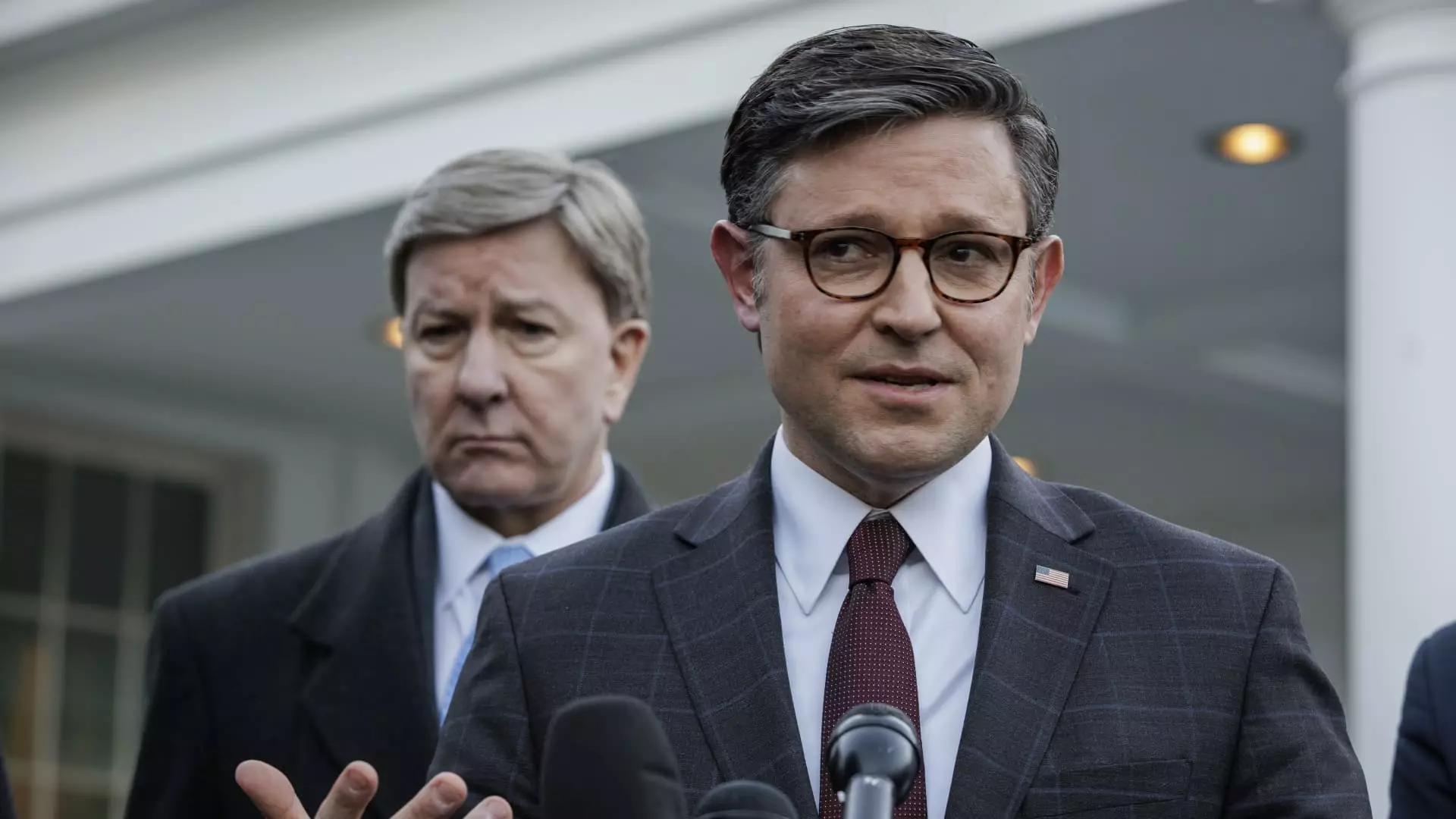House Speaker Mike Johnson and Senate Majority Leader Chuck Schumer came out of a recent meeting with President Joe Biden with a bipartisan glow. The meeting, attended by other congressional leaders, focused on important issues such as Ukraine aid, border security, and a funding package deadlock. This display of collaboration was praised by both Johnson and Schumer, who emphasized that the border should be the top priority. However, the question remains whether this bipartisan approach will ultimately yield positive results or prove to be a liability for Johnson.
As the newly elected speaker, Johnson garnered support from hardline House Republicans who expect him to prioritize their ultraconservative wish list. However, his recent bipartisan deal to approve a federal budget that would allocate nearly $1.6 trillion for the 2024 fiscal year has raised concerns among conservatives. Rep. Chip Roy, a staunch conservative, has even hinted at the possibility of launching a motion to remove Johnson. This situation highlights the delicate balancing act that Johnson must navigate as he tries to please both sides of the political spectrum.
The prolonged stalemate in Congress over Biden’s requested $105 billion supplemental funding package has left important international initiatives in limbo. The package aims to provide aid to Israel and Ukraine, strengthen Taiwan’s defense systems, and address border security concerns. Despite the president’s efforts to spur action, the bill has remained deadlocked in Congress. The primary sticking point in negotiations is border security, an issue that Biden and Johnson discussed extensively in a recent phone call. The president has emphasized the urgency of passing the funding package, stating that the time to act is now.
Congressional Republicans have been calling for increased funding for the southern border while advocating for a reduction in Ukraine aid. On the other hand, Democrats argue that sustaining Ukraine aid is crucial in order to counteract Russian aggression and uphold global democracy. The need for Ukraine’s stability extends beyond its borders, according to Democrats. Meanwhile, Biden has exhausted his executive funding options for Ukraine, and the last security assistance package was authorized on December 27. This puts Ukraine in a vulnerable position, awaiting further funding from Congress.
The collaborative sentiment expressed by Johnson and Schumer during their meeting with Biden offers a glimmer of hope for the supplemental aid package. The fact that both Democrats and Republicans agree on the importance of additional aid for Ukraine and stronger border security is promising. However, the challenge lies in turning this agreement into concrete action. While Schumer emphasized the need for bipartisan efforts, he warned against any party adopting a “my way or no way” approach. It remains to be seen whether Congress can overcome its partisan divides and pass the much-needed supplemental funding package.
McConnell’s statement that a Senate floor vote could be held next week raises cautious optimism. After months of deadlock, a potential breakthrough seems within reach. However, this optimism must be tempered with an awareness of the ongoing political dynamics. Johnson’s position as speaker and the demands of his ultraconservative supporters, along with the broader challenges of partisan politics, present significant hurdles. The coming weeks will determine the fate of the supplemental aid package and shed light on the realities of bipartisan cooperation in Congress.
The recent meeting between congressional leaders and President Biden displayed a bipartisan spirit, emphasizing the importance of additional aid for Ukraine and enhanced border security. However, the true test lies in whether this agreement can translate into effective action. The challenges faced by Speaker Johnson, the prolonged stalemate in Congress, and the competing demands of both parties all contribute to the complexity of the situation. As Congress strives to address these issues, the fate of the supplemental funding package hangs in the balance. It remains to be seen whether the realities of bipartisanship can overcome the obstacles and deliver tangible results for the American people.


Leave a Reply